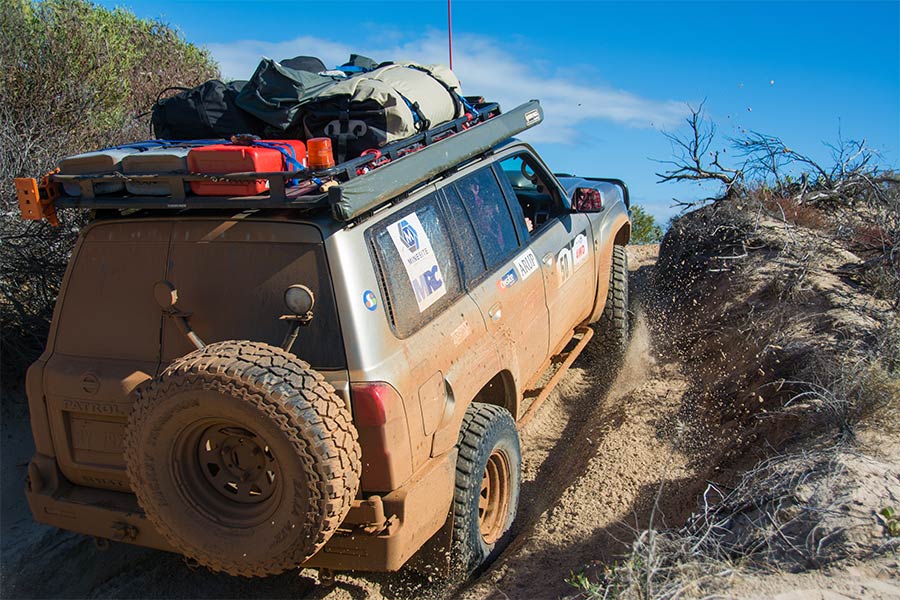Often when planning long off-roading trips, people limit themselves to fuel-conservative trips instead of the trip they want to go on. In this article, I will show you just how easy it is to maximise your car fuel carrying abilities as well as a personal review of some gas cans.
To Extend Your Range:
Off-roading will take you far away from urban areas where gas stations are few and far between. In remote locations, you may not have any way of refuelling for hundreds of kilometers. Carrying extra fuel ensures that you won’t run out in the middle of nowhere.

Challenging terrain, such as mountains, deserts, or dense forests where conditions can decrease fuel efficiency, require more fuel to cover the same distance. Extra fuel provides you with an extended range, allowing you to drive through this terrain without worrying about running out of gas.
Emergency Situations:
Off-roading can be dangerous, emergencies happen all the time with no warning such as getting lost, car damage, and unexpected obstacles. Having extra fuel can be critical in emergency situations, especially when the path you have chosen cannot be driven. Having more fuel provides you with the ability to reroute through another path.

Gas cans can have many uses other than carrying fuel. However, you should never store food or water inside one as it contains extremely harmful fuel residue.
Three Gas Cans to Use:
LSGGTIM 20 L Metal Fuel Canister

This gas can is a simple traditional army-style fuel can, its simplicity makes it user-friendly and reliable. I would highly recommend this to someone who is starting out Off-Roading and doesn’t plan on going any further than their vehicles fuel tank can take them.
It is a well-built can made from high-quality thick carbon steel, which means it’s robust and prevents accidental fuel leaks. Holding 20L of fuel is a good emergency supply that you should keep in your car at all times.
But what sets this fuel canister apart from the rest is its flexible spout and high-quality sealable opening. This option is great if you want a high-quality fuel canister with the potential to last you a lifetime.
Scepter Petrol Jerry Can 20 Litre

If you are ever feeling too confused by all the options and just want a plain simple gas can that does the job right. This can do just that, storing 20 litres while maintaining a robust lightweight frame, the can also comes cheaper than most others.
However, some people find the accessibility of this can a little difficult, like the one handle located directly above the can making it difficult to pour the whole can. If accessibility is not a problem for you and you just want to feel reassured by having some extra fuel in the car, then this is the right option.
Along with a 20-litre capacity, the can also comes with a Rear vent for quick pouring, child-resistant closure, and a spout stored in the can for less contamination.
50L Dieselpower 12V – 14L/min

We have already talked about why we need more fuel for longer 4WD trips, only having 20 litres is not enough for an extended trip. That’s why a diesel-powered fuel tank could be a solution for you.
As you can see the option above is only 20 litres, but the volume on other products reaches 2200 litres. This creates a second fuel tank or more for your car and ultimately saves space instead of you carrying the same amount in multiple smaller fuel tanks.
This specific brand comes with a 12-volt High-Quality Pump with 14L/min. A power cord 3m long with alligator clips to attach to a battery. control on-off Switch Mounted at the Pump that don’t get damaged when they run dry. It also comes with 4 m of ½” delivery hose with a munual shut off gun with a trigger.
I would use this diesel pump when going on long trips even when I’m not sure you will need it, filling it halfway or less allows for a good emergency supply without affecting fuel consumption too much.
Pouring Fuel – The Right Way
Filling up with fuel is part of our weekly routine and usually, if something goes wrong help is not far away. Unlike this, off-grid you need to be extra careful by taking extra precautions that you probably wouldn’t use when filling up in the city.

Static Electricity:
Static electricity buildup can lead to sparks and fire, touch the metal of the container to a metal part of the vehicle before pouring. This grounds any static charge.

Turn Off Engine:
Always turn off the vehicle’s engine before filling up, it reduces the risk of ignition from engine sparks. Even making small sparks with metal nearby can pose a major threat, as gas is also present when filling up.

Avoid Overfilling:
Try not to overfill the fuel tank or container, leaving some space for fuel expansion, especially in warm weather. When the gas on the inside of the can warms up or cools down the container can be put under strain due to the expanding and contracting of the gas.
Make sure to leave a little roam for this especially if your canister is plastic. Also overfilling can lead to spills and pose a fire hazard.

Use a Funnel:
If the fuel tank has a small opening, use a funnel to control the pour and reduce the risk of spills and therefore prevent potential fire hazards. If you do spill any fuel, make sure to wipe it up immediately using a cloth or rag. Do not leave spills unattended, as they can pose a fire hazard.

Dispose of Rags Properly:
If you use rags to clean up your spills, dispose of them the correct way. Do not leave fuel-soaked rags lying around, as they can be a fire hazard. Some places may have different regulations on what you can and cannot do with your fuel soaked rags.

Follow Local Regulations:
Educate yourself with local regulations around the safe handling, transportation, and storage of fuel. Different regions may have specific rules and guidelines.


